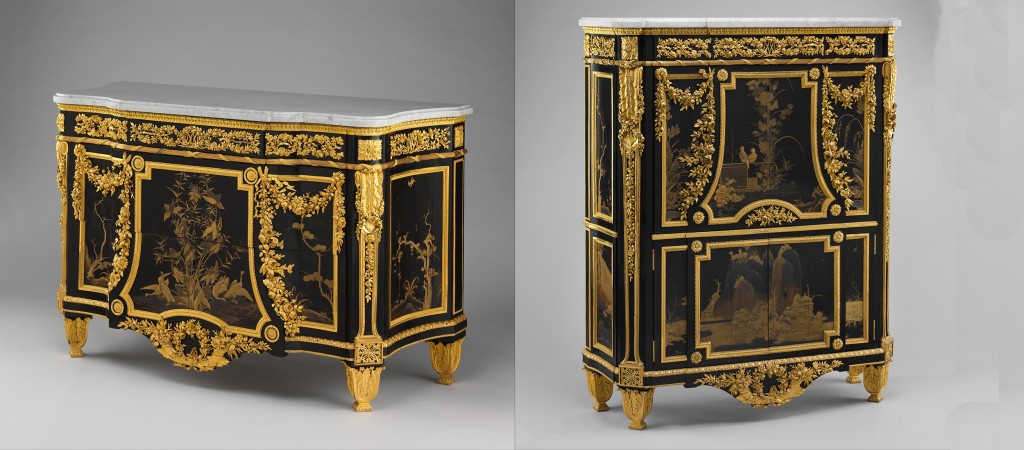Japanese lacquer was considered to be in the height of fashion for eighteenth-century French furniture. Because it was so difficult to produce, a piece of furniture or a box with a lacquer veneer was extremely valuable. In some cases, an imitation material was applied to give a similar visual effect. Most lacquer veneers were cut from screens or other pieces of furniture, usually from seventeenth-century Japan. Then they were then heated and glued to the new furniture body. Gilt-bronze pieces were useful in covering any damage or joints in the original lacquer.
Jean Henri Riesener’s secrétaire and commode made for Marie Antoinette in 1783 were designed to match a set of lacquer boxes that the Queen had inherited from her mother. To learn more about these pieces and lacquer, visit the Lacquer World project.


